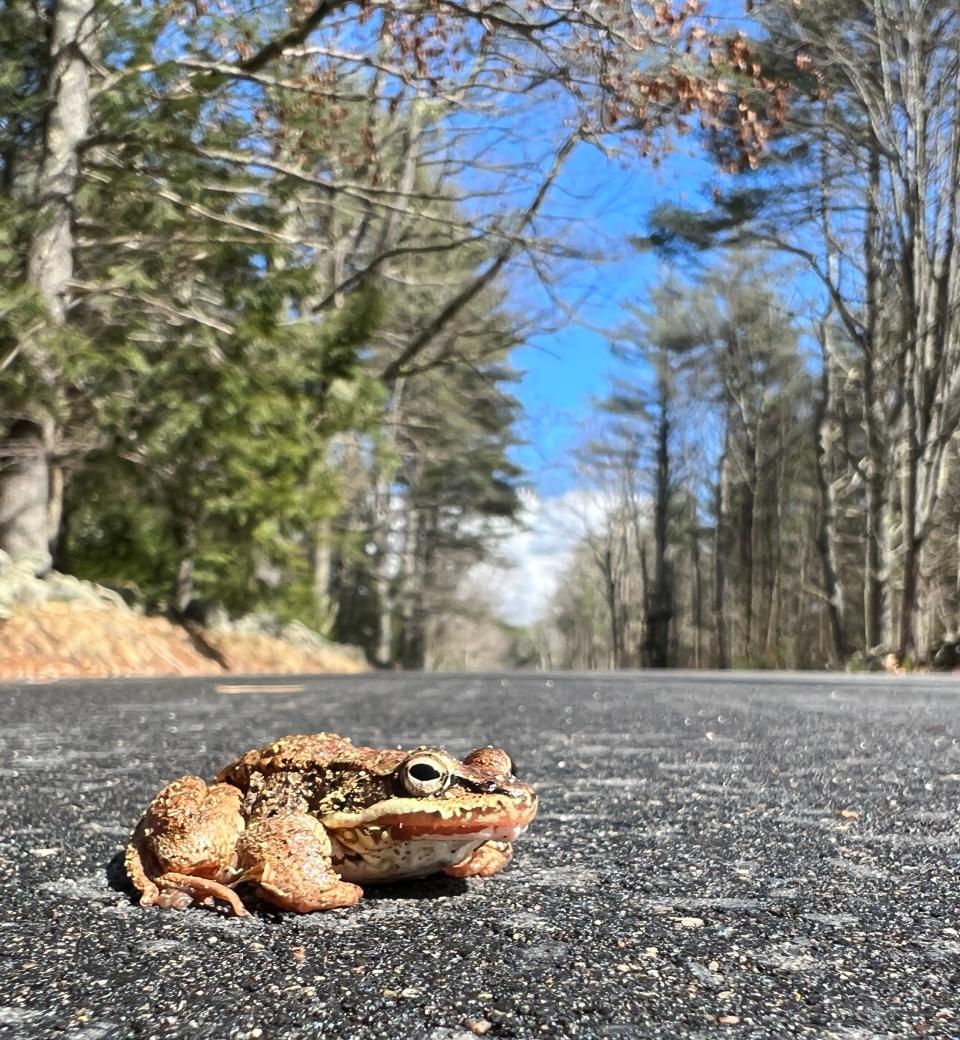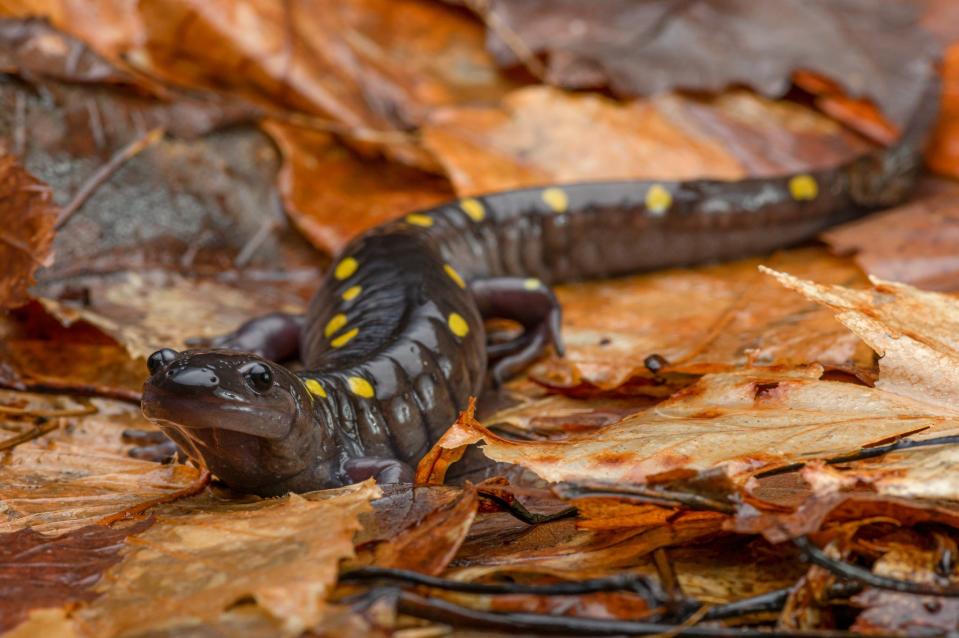How you can save frogs, salamanders on their big night: Nature News
Even though spring is here, and days are getting longer, now that daylight savings has come and gone, I get to commute to work in the dark again. This has its pros and cons, but one exciting thing is the chance to see migrating frogs and salamanders on warm, rainy mornings. Last week, while driving to work on one such warm (if you call 45 degrees Fahrenheit warm) morning, I watched tens, possibly hundreds, of frogs hopping across the road. Sadly, I also saw the squished carcasses of those who had been hit by cars.
This is part of what is called an amphibian big night. Big nights happen on rainy nights when the temperature is around 45 degrees or higher. Frogs and salamanders who have been hibernating all winter under leaves and in underground burrows emerge and migrate to the pools where they were born to find mates. Depending on location, this mass migration can involve hundreds of thousands of amphibians. Two of the most common amphibians to find migrating en masse are wood frogs and spotted salamanders.

Why are these frogs and salamanders up and about so early? They are adapted to take advantage of vernal pools, which will dry up fairly quickly. This is a problem in that these amphibians require water for the reproductive part of their life cycles. Their eggs need to develop and hatch out in water. But this also gives their fast-growing young an advantage; they have one less predator to worry about since fish cannot survive in these temporary pools. Their strategy: get to the pools early and lay their eggs. Those tadpoles develop super fast, and if all goes well, they are hopping and crawling out of the pools before they dry out.
I was first made aware, long before I ever experienced it, of the idea of a massive frog (and salamander) migration in Loren Eiseley’s essay “The Dance of the Frogs,” in which an old professor recounts to a young scientist his experience with a frog migration: “It was a late spring,” he said. “Fog and mist in those hollows in a way I had never seen before. And frogs, of course. Thousands of them, and twenty species, trilling, gurgling, and grunting in as many keys. The beautiful keen silver piping of spring peepers arousing as the last ice leaves the ponds — if you have heard that after a long winter alone, you will never forget it ... All amphibia have to return to the water for mating and egg laying. Even toads will hop miles across country to streams and waterways. You don’t see them unless you go out at night in the right places as I did, but that night… You could feel the forces of mighty and archaic life welling up from the very ground. The water was pulling them— not water as we know it, but the mother, the ancient life force, the thing that made us in the days of creation, and that lurks around us still, unnoticed in our sterile cities.”

I read this essay as a kid and when I moved to Maine and experienced my first big night it was pure magic, spring made physical.
These frogs (and salamanders) need to migrate to vernal pools. Unfortunately, we have divided up the forested wetland complexes they need — we have filled in wetlands and built roads and driveways in the middle of their age-old migration routes. One way we can help is to watch for them during migration season and be careful when driving along wet roads on rainy nights.
We can also get involved in citizen science projects that monitor migration routes and provide guidelines for helping these tiny amphibians make it safely across roads. I recently joined Maine Big Night, a nonprofit community science project established to confront the issue of amphibians becoming roadkill during their spring migration.
Maine Big Night (MBN) organizes volunteers to assist these animals across the road while collecting valuable data that will help to protect them in the future. MBN recorded data on over 20,000 amphibians at over 300 road locations throughout the state as of 2023 and will be collecting data for 2024 through May. It isn’t too late to check out their website, get certified to collect data, and hit the road (so to speak). If you don’t live in Maine, find an amphibian monitoring program in your area, and get involved. Coastal New England is rich in vernal pools which gives us all the opportunity to get outside on rainy spring nights and participate in this rite of spring.

Susan Pike, a researcher and an environmental sciences and biology teacher at Dover High School, welcomes your ideas for future column topics. Send your photos and observations to spike3116@gmail.com. Read more of her Nature News columns at Seacoastonline.com and pikes-hikes.com, and follow her on Instagram @pikeshikes.
This article originally appeared on Portsmouth Herald: How you can save frogs, salamanders on their big night: Nature News

